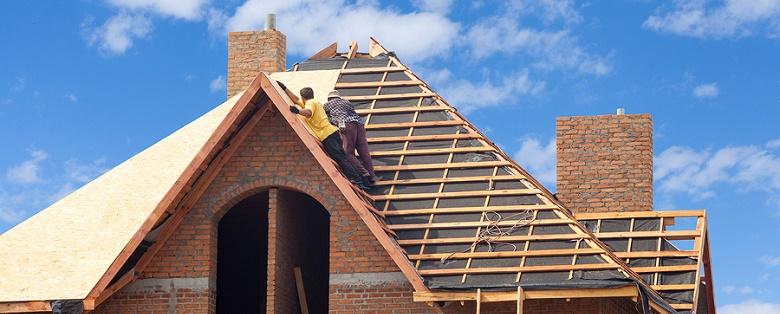
There are quite a few types of roofing that can be used on homes and buildings depending on the type of roof. When roofers decide what material should be used on a structure, the first question that needs to be answered is whether the roof is pitched, flat, or low sloping. Based on the degree of pitch, the most appropriate type of material can be chosen.
What Is Roof Pitch?
The pitch of a roof is its angle in comparison with the ground and there are a variety of pitches commonly used in roofing construction. The simplest of all buildings can have a flat roof, while more complicated structures may have very tall pitches or even multiple pitches.
Why Does Pitch Matter?
When considering appropriate installation materials, pitch is important because it determines water-shedding ability. A building with a flat or low-sloped top cannot shed water as efficiently as one with a sharp pitch that sheds water very quickly. Even though flat roofs are technically not flat as they do have a low angle of a few degrees, flat and low-slope installations below a certain angle must be decided with this in mind.
Material must be used that will create a water-resistant seal over the top of the building. Pitched installations are built using layered materials in order to prevent leaks.
Different Materials for Different Pitches
Generally speaking, flat and low-slope roofing installations are less expensive than similar pitched installations for the same surface area because they require fewer components. Despite this, material used on flat roofs cannot be reliably used on pitched installations and vice-versa. Following are some choices for each type of roof:
Flat and Low-Slope
When dealing with a surface that is nearly flat or has a slope of only a few degrees, materials must act as a total barrier across the top of the building. Seams are avoided since they increase the possibility that standing and slow-draining water could eventually leak through these areas.
Roofers use BUR and membrane materials to create a watertight and seamless cover over the building that will be easy to install since it does not require working on an angle. Flat roofs are also easy to maintain. Metal sheets and shingles should be avoided on flat installations because of the seams. They can be used on lower-slope installations with a pitch greater than 3-in-12 as this provides enough angle to facilitate water shedding.
Pitched
The standard installation used on pitched roofs is layered shingles or tiles made from a variety of materials. Roofers apply material from low to high in overlapping layers, which permits water shedding without allowing water to seep under the unprotected edge of the shingle or tile.
Metal sheets can also be used, either layered like large shingles or fit together with tight standing seams. These roofs dry faster as they promote faster water shedding.The main drawback to layered installations is they require working on a pitched surface and can be harder to maintain. In some instances when pitch is especially sharp, the work can only be performed using specialty equipment that allows safe access to the various roof angles.
Based on this information regarding roof pitch, it should be easy to see why certain roofing materials are suitable for some installations but not for others. This decision may seem simple enough; however, it actually requires careful consideration, especially when thinking of installing metal.
To ensure the best installation using preferable materials, home and building owners should always work with roofers who can expertly determine roof pitch and choose materials accordingly!